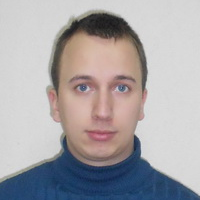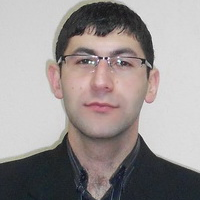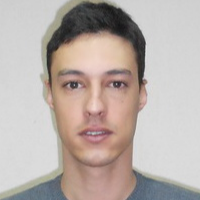International Journal of Intelligent Systems and Applications (IJISA)
IJISA Vol. 5, No. 5, 8 Apr. 2013
Cover page and Table of Contents: PDF (size: 454KB)
Simulation Model of Magnetic Levitation Based on NARX Neural Networks
Full Text (PDF, 454KB), PP.25-32
Views: 0 Downloads: 0
Author(s)
Index Terms
Neural Network, Magnetic Levitation System, Nonlinear Model, Neural Network Training
Abstract
In this paper, we present analysis of different training types for nonlinear autoregressive neural network, used for simulation of magnetic levitation system. First, the model of this highly nonlinear system is described and after that the Nonlinear Auto Regressive eXogenous (NARX) of neural network model is given. Also, numerical optimization techniques for improved network training are described. It is verified that NARX neural network can be successfully used to simulate real magnetic levitation system if suitable training procedure is chosen, and the best two training types, obtained from experimental results, are described in details.
Cite This Paper
Dragan Antić, Miroslav Milovanović, Saša Nikolić, Marko Milojković, Staniša Perić, "Simulation Model of Magnetic Levitation Based on NARX Neural Networks", International Journal of Intelligent Systems and Applications(IJISA), vol.5, no.5, pp.25-32, 2013. DOI:10.5815/ijisa.2013.05.04
Reference
[1]I. Ahmad and M. Akramjavaid. Nonlinear model and controller design for magnetic levitation system. Proceedings of 9th International Conference on Signal Processing, Robotics and Automation, University of Cambridge, United Kingdom, February, 20.-22., 2010, pp. 324-328.
[2]G.K.M. Pedersen and Z. Yang. Multi-objective PID-controller tuning for a magnetic levitation system using NSGA-II. Proceedings of 8th Annual Conference on Genetic and Evolutionary Computation, July, 8.-12., 2006, Seattle, Washington, USA, pp. 1737-1744.
[3]A. Trisanto. PID controllers using neural network for multi-input multi-output magnetic levitation system. Electrican Journal Rekayasa dan Teknologi Elektro, Vol. 1, No. 1, pp. 63-68, 2007.
[4]M.Y Rafiqa, G Bugmannb, D.J Easterbrooka. Neural network design for engineering applications. Computers & Structures, Vol. 79, No. 17, pp. 1541–1552.
[5]M. Anthony and P.L. Bartlett. Neural Network Learning: Theoretical Foundations. Cambridge University Press, 2009.
[6]M. Lairi and G. Bloch. A neural network with minimal structure for MagLev system modeling and control. IEEE International Symposium Intelligent Control/Intelligent Systems and Semiotics, Cambridge, MA, September, 15.-17., 1999, pp. 40-45.
[7]Inteco, The Magnetic Levitation System (MLS)-User’s Manual, Available at www.inteco.com.pl, 2011.
[8]V. Dolga and L. Dolga. Modelling and simulation of a magnetic levitation system. Fascicle of Management and Technological Engineering, pp. 1118-1124, 2007.
[9]C.-A. Dragoş, St. Preitl, R.-E.Precup, R.-G. Bulzan, E. M. Petriu, and J. K. Tar. Experiments in fuzzy control of a magnetic levitation system laboratory equipment. Proceedings of 8th International Symposium on Intelligent Systems and Informatics, Subotica, Serbia, 2010, pp. 601-606.
[10]C.-A. Dragoş, St. Preitl, R.-E.Precup, and E. M. Petriu. Magnetic levitation system laboratory-based education in control engineering. Proceedings of 3rd International Conference on Human System Interaction, Rzeszow, Poland, 2010, pp. 496-501.
[11]P. Šuster and A. Jadlovska. Modeling and control design of magnetic levitation system. Proceedings of 10th International Symposium Applied Machine Intelligence and Informatics, Herl’any, Slovakia, January, 26.-28., 2012, pp. 295-299.
[12]M.H. Hudson, M.T. Hagan and H.B. Demuth. Neural network toolbox 7, User’s Guide, 2012.
[13]C. Voglis and I.E. Lagaris. A global optimization approach to neural network training. Neural, Parallel and Scientific Computations, Vol. 14, pp. 231-240, 2006.
[14]B. Wilamowski. Neural network architectures and learning algorithms. IEEE Industrial Electronics Magazines, Vol. 3, No. 4, pp. 56-63, 2009.
[15]C.-A. Dragos, R.-E. Precup, E. M. Petriu, M. L. Tomescu, St. Preitl, R.-C. David, and M.-B. Radac. 2-DOF PI-fuzzy controllers for a magnetic levitation system. Proceedings of 8th International Conference on Informatics in Control, Automation and Robotics, Noordwijkerhout, Netherlands, Vol. 1, pp. 111-116.
[16]R.-C. David, C.-A. Dragos, R.-G. Bulzan, R.-E. Precup, E.M. Petriu and M.-B. Radac. An approach to fuzzy modeling of magnetic levitation systems. International Journal of Artificial Intelligence, Vol. 9, No. A12, pp. 1-18, 2012.
[17]N.M. Nawi, R.S. Ransing, and M.R. Ransing. An improved conjugate gradient based learning algorithm for back propagation neural networks. International Journal of Computational Intelligence, pp. 780-789, 2007
[18]C. Broyden. Quasi-Newton methods. in Numerical Methods for Unconstrained Minimization, Ed. W. Murray, Academic Press, New York, 1972, pp. 87-106.
[19]A. Ranganathan, The Levenberg-Marquardt algorithm. Tutorial on LM Algorithm, 2004.




